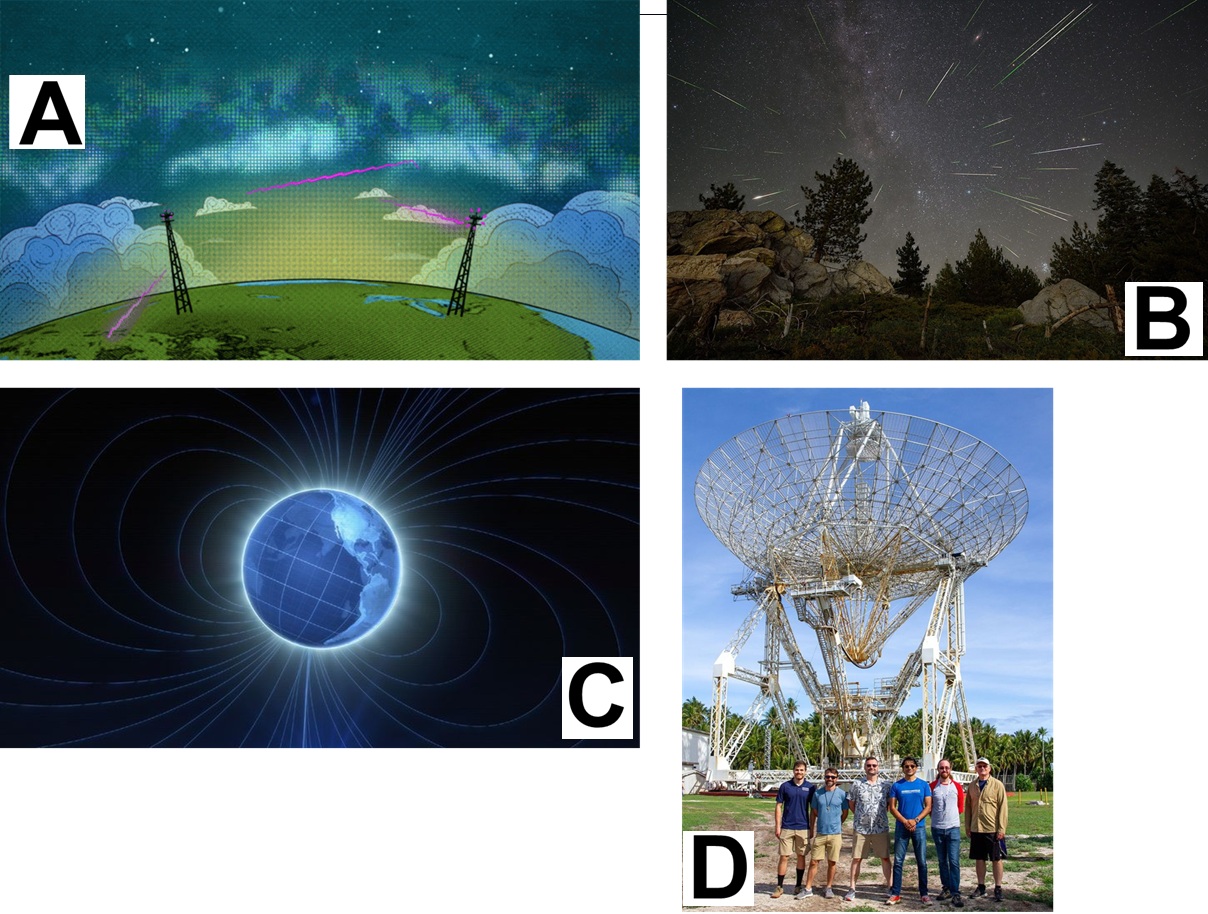
12 Jun 2025
On ascent, the rocket will release colorful vapor tracers. Ground-based cameras will track the tracers to measure wind patterns in three dimensions. Once inside the Sporadic-E layer, the rocket will deploy four subpayloads — miniature detectors that will measure particle density and magnetic field strength at multiple points. The data will be transmitted back to the ground as the rocket descends.
On another night during the launch window, the team will launch a second, nearly identical rocket to collect additional data under potentially different conditions.
Barjatya and his team will use the data to improve computer models of the ionosphere, aiming to explain how Sporadic-E layers form so close to the equator.
“Sporadic-E layers are part of a much larger, more complicated physical system that is home to space-based assets we rely on every day,” Barjatya said. “This launch gets us closer to understanding another key piece of Earth’s interface to space.”
[Image]
(A) An animated illustration depicts Sporadic-E layers forming in the lower portions of the ionosphere, causing radio signals to reflect back to Earth before reaching higher layers of the ionosphere.
(B) The Perseids meteor shower peaks in mid-August. Meteors like these can deposit metals into Earth's ionosphere that can help create cloud-like structures called Sporadic-E layers.
(C) A conceptual animation shows Earth’s magnetic field. The blue lines radiating from Earth represent the magnetic field lines that charged particles travel along.
(D) The SEED science team and mission management team in front of the ARPA Long-Range Tracking and Instrumentation Radar (ALTAIR). The SEED team will use ALTAIR to monitor the ionosphere for signs of Sporadic-E layers and time the launch.
